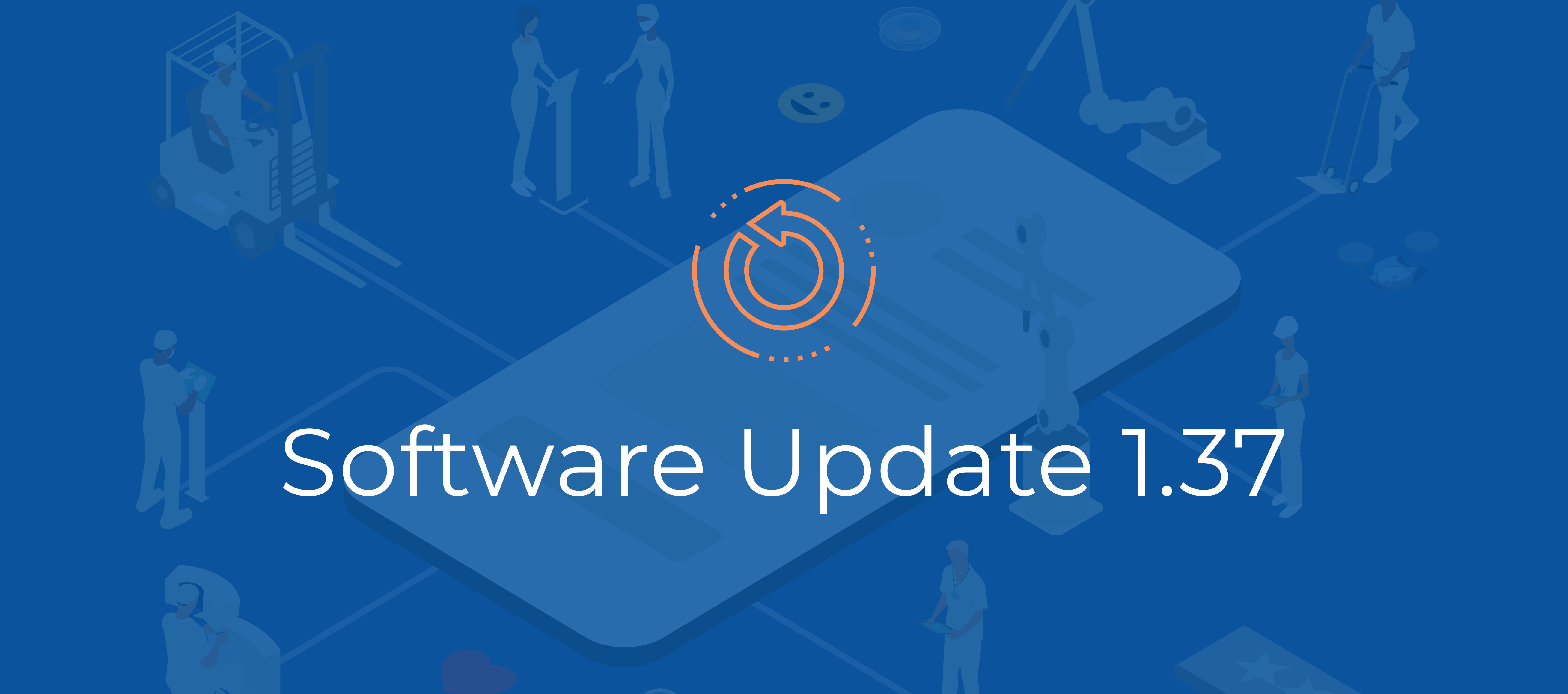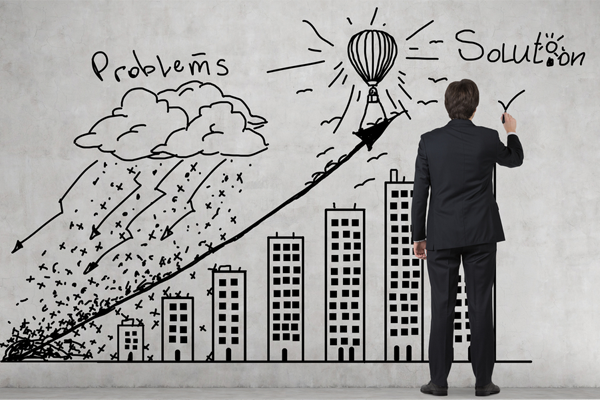Companies in pursuit of more cost-effective and secure computing resources are increasingly opting for cloud storage solutions because of their enhanced security and reliability. What’s more, the normalization of remote work necessitates robust IT systems that enable employees to securely access company data from anywhere. By 2022, Gartner predicts that 75% of all databases will be in the cloud. A 2020 survey found that 41% of enterprise workloads would be run on public cloud platforms by the end of the year, with another 22% using a hybrid option (a mix of on-premise servers and cloud storage platforms). Why all the fuss? Migrating to the cloud gives you access to virtually limitless computing resources, including servers, storage, databases, analytics, and intelligence. If you deal with large volumes of data and use a variety of software applications, cloud computing might be for you. According to researcher IDC, spending on cloud infrastructure across dedicated and shared environments increased 6.6% year on year to $18.6 billion in Q3 2021. What is the difference between cloud storage and on-premise servers? While on-premise servers constitute onsite hardware that is controlled, administered, and maintained by your company’s in-house IT team, cloud storage outsources the task of server administration to the cloud service provider. This eliminates the costs of procuring and updating hardware and employing a dedicated IT professional to oversee the server. The cloud provider installs and maintains all hardware, software, and other supporting infrastructure in its data centers. Cloud platforms run on a pay-as-you-go business model. Users pay a subscription fee to the cloud service provider that is commensurate with the amount of storage needed and/or cloud services used. Need to add users or increase your storage capacity? Simply upgrade your plan in a few clicks. Cloud platforms also provide access to advanced computing resources, such as dynamic loading (used to achieve better service provisioning), auto-scaling (automatically scale cloud services up or down based on defined situations), and serverless computing capabilities. Some organizations opt for hybrid cloud solutions— using different types of IT deployment models including on-premise servers, private cloud, or public cloud. What types of applications should be migrated to the cloud? Before you scramble to migrate all your data to the cloud pronto, take note that not all processes benefit from migrating to the cloud. For example, legacy on-premise applications may be difficult to migrate, and botched migrations can prove costly. Legacy software has special attributes that may require application rearchitecting (breaking down applications and rebuilding them in a more modern, scalable design). However, businesses that run legacy software are at increased risk of data breaches. What’s more, these systems are often not as efficient or easily integrated with other software applications. They may no longer be supported by the original vendor, meaning the vendor is no longer issuing bug fixes or security patches. Aging servers can also slow down a company’s business processes. Cloud storage vs. on-premise servers: Pros and cons Cloud storage Best for companies that are growing quickly, and those that have a distributed workforce and global operations. Pros Cons Less capital investment and lower maintenance costs: Companies only pay for the cloud services they use, and there is no need to install any hardware. Less labor-intensive: There is no need for dedicated IT support staff to maintain cloud storage as server maintenance and software upgrades are outsourced to the cloud service provider. Easy file sharing and collaboration: Distributed teams can collaborate and share data easily. Multiple users can collaborate on one common file. Enables remote work: Cloud storage enables employees to access data from any device with an internet connection. Data is synchronized across all devices. Easy to scale: If your current storage plan is not enough, simply purchase a higher-tier subscription. Reduced risk of permanent data loss: All data is backed up and stored across thousands of data centers, so even in the event of a disaster, the data should remain intact. The costs add up quickly: Cloud service providers charge according to usage, storage capacity, or a combination of factors. Costs can balloon unexpectedly for companies experiencing rapid growth. There may be additional costs for uploading and downloading files from the cloud. Internet dependency: You cannot access files without an internet connection. Slow internet speeds can hamper access. Requires additional security measures: Some cloud storage vendors lack adequate data security. You must take additional steps to secure your data in the cloud. Less privacy: Your data is managed by a third party and is visible to the cloud provider. Less customizability: Cloud operators provide limited customization options, whereas on-premise servers can be customized almost limitlessly. Fixed contracts: Beware of entering into fixed contracts that don’t respond to your changing storage needs. It may be best to opt for pay-as-you-go. On-premise servers Best for companies that store sensitive data (eg: patient records or credit card data), large companies that require flexible/customized storage solutions, or those that don’t have access to a high-speed internet connection. Pros Cons Greater privacy: No third party has access to your critical data. On-premise may be the preferred option for companies that handle sensitive data. Access does not require an internet connection: You can access files and applications quickly even if you have a slow or unreliable internet connection. You can also keep your internet costs low since you don’t need to pay for a high-speed connection. Maintain physical control over your servers: Companies can modify or upgrade servers autonomously without having to go through a cloud service provider. May offer greater flexibility and customization for their storage needs. Requires IT support - Servers must be managed and maintained by dedicated staff. In enterprise organizations with massive datasets, this is a full-time job. Increased maintenance costs: Companies must buy hardware, software, and licenses to upgrade or repair servers. Requires significant capital investment: High upfront costs of purchasing servers and hardware, and installation is a time-consuming process. Limited scalability: On-premise servers are difficult to scale quickly in the event that your organization needs more storage. Scaling requires the installation of new hardware, which is expensive and time-consuming. Increased risk of data loss: All data is stored on an internal server, which poses risks unless you have an offsite backup service. Transitioning to the cloud: How does it work? Cloud migration is the process of transferring databases, applications, and IT processes into the cloud. Usually, it’s not a simple plug-and-play process, and requires lots of advance planning. There are various ways to do a cloud migration, from a procedure as simple as a “lift and shift” (migrating your application to the cloud with little or no changes) to a complete application re-architecture. The most complex, time-consuming step during a cloud migration is migrating data— especially when it involves a large amount of data. In most cases, data can be transferred over the internet (simply upload your databases to the cloud service provider’s website), but for massive databases that would take too long to transfer over the internet, some providers offer physical data transfer methods, such as loading data onto a hard drive and then shipping the device to the provider. Before you migrate to the cloud: a checklist 1. Determine how you’d like to migrate your data There are two ways to perform a cloud migration: shallow cloud integration or deep cloud integration. Shallow cloud integration (AKA “lift and shift,” “rehosting,” or the “forklift approach”) entails moving the on-premise application while making limited or no changes to the cloud servers or the application code, except whatever is required to run the application in the new environment. In other words, ite means moving the application as is. Benefits of shallow integration Cost-effective Tends to be a less costly, labor-intensive migration that can be performed relatively quickly. Fewer security problems Does not pose additional security risks, so long as the application is secure, up-to-date, and patched before the migration. An easy way to get started in cloud computing Moving mission-critical IT infrastructure from on-premise servers to the cloud constitutes a major commitment of time and money, although these costs are justified in the long term. A shallow cloud integration is a good starting point for complex cloud integrations in the future. Deep cloud integration involves modifying the application so you can use advanced cloud services. This is usually a necessary step when migrating legacy software to the cloud. You can even opt to upgrade legacy software to a cloud-native framework for better overall performance, efficiency, and scalability—currently one of the biggest trends in the software industry. Benefits of deep cloud integration: Faster deployment You can deploy your apps and services faster and scale them more quickly. Enables edge computing Certain applications that require low latency (no delays) can only be enabled after a deep cloud integration. Facilitates remote work Authorized employees can access applications over the internet from any location. Enables businesses to operate in distributed work environments. 2. Determine which applications to move to the cloud Some of your applications may already be optimized for on-premise servers and don’t need to be migrated to the cloud. You may wish to keep applications that hold sensitive data (eg: medical records or credit card numbers) stored on on-premise servers. Certain industries like finance and healthcare require businesses to use on-premise servers for security reasons. 3. Establish KPIs for cloud migration As with any new technology adoption, organizations should establish KPIs to evaluate the success of a cloud migration. More importantly, KPIs reveal unexpected problems and help you determine when the migration is complete. For each KPI, set a baseline metric so you can compare the pre-migration performance of your application to its post-migration performance. Sample KPIs for cloud migration include: Response time Page load time Error rates CPU usage % Memory usage 4. Set your budget and choose a cloud service provider Before you set a budget and start searching for vendors, make sure you’re clear on your specific business needs. Create a checklist of requirements (technical, security, data governance, service management) and minimum expectations to reference while shopping around. At minimum, choose a provider who can help you optimize your budget, manage your cloud infrastructure, and offer 24/7 support. Most organizations underestimate the actual costs of cloud migration, so do your homework. According to a ‘State of the Cloud 2020’ report by Flexera, “organizations are over budget for cloud spend by an average of 23% and expect cloud spend to increase by 47% next year.” A pay-as-you-go model might work well for an organization that doesn’t have a lot of data and plans on slow but steady growth, but not such a good idea for a large enterprise with reams of data. After you migrate to the cloud... Establish cloud security Shut down and remove any redundant systems, and sever any superfluous network connectivity. Migrations provide the opportunity to review your security measures. While your cloud provider maintains your databases for you, security is a shared responsibility between you and your cloud service provider. Monitor the cloud Your cloud provider will monitor systems for basic health and availability, but you need to do your own monitoring. Monitor virtual machines, operating system resources, and application availability. Monitor system and application performance and ask your employees for feedback so you can make any necessary adjustments. Determine if the migration was successful Keep an eye on the KPIs that were defined as part of the audit you did right before carrying out the migration. It may also help to review the business case that was formed during the project initiation phase. Interested in learning more about our next-generation cloud platform? MicroMain Global offers a user-friendly mobile app and the ability to work from anywhere.
Read More6 Ways to Smash Your Maintenance Goals After You Buy a CMMS
So you bought a shiny new software solution (yay!), trained your employees on how to use it, and now you’re pumped to overshoot all your business goals this fiscal year. Often, when companies purchase new software, a pervading sense of 'what now?' sets in after they sign on the dotted line. Software implementation is one thing—getting your new system up and running and integrating it into your existing workflows—but now the pressure is on to, well, “do better”—whatever that means. Setting metrics-focused maintenance goals is a great way to ensure software adoption goes according to plan. For example, if unscheduled downtime totaled 17 days last year— the average amount of downtime across all industries— what is your target for this year? Which of your high-value assets should be on a preventive maintenance plan by Q2? How will you measure the ROI of your preventive maintenance efforts? A CMMS can go a long way towards improving productivity—you can automate maintenance scheduling, make data-informed inventory forecasts, and receive maintenance requests from a website request form—but there’s a lot of behind-the-scenes legwork needed to achieve the results you’re looking for. Surveys show that 74% of CMMS users believe that this tool improves productivity, while 58% consider it cost-effective in general. If you’ve recently purchased a CMMS or you’re wondering how to get more out of your software, here’s a roadmap to help you get the most out of your software as quickly as possible. 1. Track employee performance and crack down on the slackers (Just kidding! Sort of.) A CMMS gives you a big-picture view of employee performance that tells you whether or not a) You’ve hired the right employees; b) You’re assigning the right tasks to the right workers; and, c) Your workers are adequately trained and equipped with the right resources to do their jobs. Granular data allows you to drill down into each technician’s wrench time (the percentage of an employee’s shift that is spent on actual maintenance tasks), the number of work orders handled in one scheduling, and time spent on specific tasks (also known as Mean Time to Repair). If an employee spends too much time on one task, maybe they need additional training or don’t have the right tools to get the job done. Many companies will train employees as part of their initial onboarding and then stop there. However, workers need guidance on how to use and maintain their work tools, periodic refreshers on workplace safety recommendations, and procedural guidance overall. They also need to learn incident management best practices—how to intervene in the event of an emergency or equipment malfunction. A CMMS enables you to store documentation, instructions, and OEM recommendations in a centralized location, so employees should have access to the information they need at all times. If you’re unsure about why you’re seeing certain patterns in the data, such as a swelling maintenance order backlog or unusually high Mean Time To Repair (MTTR), ask your employees about what’s getting in their way. Training may be the issue. In a recent study of over 3000 businesses by the National Center on Education Quality of the Workforce, those that increased employee development/training saw an average increase in productivity of 8.6%. The study also found that companies that invest the most in workplace learning yielded higher net sales and higher gross profits per employee. 2. Practice good data hygiene because dirty data sucks Your CMMS is, first and foremost, a data repository for all things maintenance management. Treat your database like a temple. Poor data hygiene makes it harder to make accurate predictions using your data, which can lead to major errors when it comes to making data-driven business decisions, like how to allocate the maintenance budget this year or determining if you have the bandwidth to sign a new client. While the initial data entry to get your software up and running was most likely handled by your CMMS provider, you need to police the day-to-day data entry done by your employees to ensure that it fits certain standards. From inputting equipment data such as model number, serial number, purchase data, installation data, and so on to inventory parts information and labor information, there are many opportunities to “corrupt” the data. Here are some things you can do to avoid the problem of “too many cooks in the kitchen.” Have your technicians enter the data themselves - Technicians should have direct access to the CMMS so they can enter relevant data as soon as they accept a work order. This is a better alternative to having technicians fill out a paper form and then pass it on to a data entry clerk or administrative assistant. The information may be illegible or the paper may get lost, and it takes more time to document the data. Make rule-based forms for data entry - Each field in your data entry forms should have rules regarding acceptable inputs. This helps guard against inaccurate data entry from careless mistakes or negligence. For example, technicians shouldn’t be able to input letters in a numbers-only field. Certain fields should have acceptable ranges (eg: a percentage field should be 0-100), units of measurement ($, feet, lbs), or specific formatting rules (eg: social security numbers must be formatted XXX-XX-XXXX). Where possible, add a dropdown menu so technicians can select from a menu of options, rather than typing into a text field. Misspellings, missing data, duplication, or incorrect units of measurement can result in dirty, unusable data. Restrict user permissions - Restrict user access to relevant parties. Say you operate several distilleries. Technicians from one distillery should be able to view the data from another distillery but not edit it. Regularly review your CMMS hierarchies - Large enterprises typically have inventory hierarchies set up within their CMMS to distinguish between different manufacturing plants or worksites, each with a corresponding hierarchy that shows where assets are located and sorted into specifics such as floor, aisle, shelf, or bin. When circumstances change—say you opened a new plant or moved a number of items into a different storage unit—you need to update these changes in your CMMS so you can keep an accurate inventory count. 3. Tighten up your inventory management (no more stealing pens from the office!) Done right, just-in-time inventory management can be a major competitive advantage. Using historical data on asset failure and automated alerts when inventory runs low, you can forecast when parts are about to fail and preemptively order replacements ahead of time. This means keeping inventory costs low while never being caught off guard without a crucial replacement part. A CMMS tracks data over time so you’ll know when to order parts, how many spare parts to keep in stock, and which parts need to be replaced with better-quality ones. CMMS provides cloud-based inventory management so that data on accurate stock levels is available to every user. By tracking data over time, you can find patterns. You can identify which parts technicians use frequently or infrequently and match parts with pieces of equipment on which they are used. Tracking inventory location is another powerful feature of a CMMS. Use real-time inventory tracking to keep tabs on every piece of company inventory, mapping it not just to a specific facility but an aisle, shelf, or bin. When inventory managers need a specific item, they can just look it up in the CMMS instead of calling different locations to track down the item. 4. Start tracking MTTF—because your cheap, replaceable assets need TLC, too Those “cheap” ball bearings, fan belts, and light bulbs that keep the lights on (no pun intended) at your manufacturing plant can lead to massive downtime and lost revenue if they fail unexpectedly. Mean Time to Failure (MTTF) is a crucial failure metric that measures the average amount of time in hours that a non-repairable asset operates before it fails. Since this metric applies to assets that cannot be repaired, MTTF can also be thought of as the asset’s average lifespan. Here, “failure” refers to any disruption significant enough to result in unscheduled downtime or prevent an asset from functioning as intended. Generally, technical teams aim to extend MTTF as long as possible. The longer the interval between part failure, the less frequently parts need to be replaced, the less time teams spend replacing parts, and the less money the organization spends replacing physical components. Additionally, a longer MTTF means teams are less likely to be caught by surprise when a machine fails. Here’s what you can do with MTTF: Know when to stock replacement parts and how many of them to keep in stock Make sure you’re getting the highest quality parts at the most competitive prices (and switch suppliers or parts if you need to) Schedule preventive maintenance tasks more accurately based on the MTTF of your low-value assets. For your high-value assets, pay close attention to MTBF (Mean Time Between Failures), which measures the average amount of time in hours that a repairable asset operates before needing repairs. MTTF and MTBF are closely related because the inexpensive, non-repairable assets are what keep your expensive, repairable assets running. 5. Get started on preventive maintenance yesterday CMMS providers are always harping on about preventive maintenance—for good reason. Preventive maintenance refers to regular, routine maintenance to keep equipment in good operating condition. The point is to prevent unplanned downtime stemming from unexpected equipment failure. An effective PM plan requires careful planning and scheduling of maintenance tasks based on historical failure metrics such as MTTF and MTBF. In 2020, 76% of companies in the manufacturing industry worldwide prioritized preventive maintenance. Preventive maintenance tasks include inspections, cleaning, lubrication, oil changes, adjustments, repairs, or replacing parts. The exact type of preventive maintenance required will vary based on operation and type of equipment. PM is typically reserved for high-value assets because of its high upfront cost. A CMMS enables you to coordinate preventive maintenance tasks easily. The software stores the organization's maintenance data in the cloud so technicians can keep track of inspections, repairs, and replacements, and receive automatic work orders. The system can plan and prioritize maintenance tasks based on production schedules and other ongoing maintenance work, thereby minimizing disruptions. 6. Bonus tip: Consider implementing Total Productive Maintenance If you’re ready to overhaul your maintenance operations and really kick things up a notch (or ten), Total Productive Maintenance is a philosophy that entails using maintenance management as a competitive advantage. TPM strives for total perfection—no downtime, no accidents, no lost revenue—by doing several things: Requiring employees to undertake autonomous maintenance. Training employees who operate machinery on how to inspect and repair equipment. Employees are expected to do routine maintenance tasks like cleaning, lubrication, and assume ownership over their work and their workspaces. Eliminating waste. Any process, task, or item deemed redundant (i.e. it does not add value to the customer) must be eliminated. Sharing maintenance responsibilities throughout the organization - Forming small, multidisciplinary teams to do preventive maintenance and autonomous maintenance (operators maintain their own equipment). Standardizing work processes to minimize error. Engaging in continuous process improvement to ensure tasks are being done in the most efficient way by using data insights to guide the approach. Total Productive Maintenance was invented by Seiichi Nakajima of Japan between 1950 and 1970 and was first implemented at Nippon Denso (now Denso) a company that makes parts for Toyota. Implementing a TPM plan can greatly increase your overall equipment effectiveness (OEE) over time. While TPM allocates jobs normally done by maintenance technicians to all plant personnel, it does not eliminate the need for a dedicated maintenance team. CTA: See something you like and want to implement it at your organization but aren’t sure where to start? Check out our upcoming events or sign up for our newsletter to receive ongoing maintenance management advice.
Read More5 Maintenance Trends You Need to Know for 2022
As businesses increasingly turn to big data and automation to streamline their operations, companies are now competing on what were once considered “minor” details—auxiliary business processes like inventory control, maintenance management, and people management. So what if your competitor achieves 15% less downtime than your organization? Well, not only are they saving hundreds of thousands of dollars in maintenance costs each year, but they’re producing more of your product and most likely worming their way into your market share. Remember: if you’re not keeping up, you’re falling behind. Even if New Year’s resolutions went out of vogue during the pandemic, 2022’s arrival is still a welcome opportunity to reassess what you’ve been doing and prepare for the year ahead. Here’s what you need to know about the latest, most exciting trends in maintenance management to keep your business on the cutting edge. 1. Sensor technology will give everyone superpowers IoT sensors have changed the game, enabling maintenance teams to remotely monitor machinery. By automating the process of collecting maintenance data, such as mean time between failures (MTBF) and asset life cycle, facilities can establish preventive maintenance and predictive maintenance programs that grow more accurate over time as the system accumulates more data. While many forms of industrial sensing exist— including pressure, position, temperature, and speed—vibration sensing is still the most common. Vibration analysis is used in rotating machinery to detect loose or worn bearings, equipment misalignment, or low fluid levels, all of which manifest as changes in vibration (normal vibration occurs at frequencies between 6-10 kHz). Using sensors to anticipate machine failure can save companies millions of dollars. Parts that cost a few dollars can cost manufacturers many times that in repairs and lost revenue when they fail. In 2020, Forrester predicted that companies that already used sensors on 25% of their machinery would increase their use by four-fold through 2023. 2. Decentralized repair teams? Yes, please! With sensing technology at their fingertips, companies are reconsidering whether to keep an onsite maintenance staff for each facility. Open networks of repair logs and real-time machine data enable managers to keep tabs on productivity in real-time, which enables them to quickly deploy remote maintenance teams to different facilities in the event of an emergency. Some organizations are experimenting with decentralized maintenance management— that is, turning maintenance management into a shared responsibility among all personnel rather than the sole purview of the maintenance technicians. Instilling a culture of autonomous maintenance means involves charging machine operators with minor maintenance tasks such as cleaning equipment and checking the oil. This is done by empowering workers to take ownership over their workstations and the equipment they use. Decentralized maintenance is ideal for large organizations that operate multiple facilities. Dispersing authority throughout the organization shortens the approval process and enables maintenance teams to execute faster. 3. You'll get a lot of s**t about downtime and inventory management if you don't do it right With the mainstreaming of CMMS and other maintenance management software solutions, extensive unscheduled downtime and poor inventory control are no longer acceptable. A new report from Industrial IT predicts that the global CMMS software market will reach $1913.1 million by 2028, growing at a CAGR of 10% over the analysis period. Now that facilities can easily track parts inventory and availability using software, more manufacturers will focus on mitigating inefficiency in their current storeroom. Companies know that reducing unplanned downtime yields major cost savings—thereby creating a competitive advantage. Estimates show that downtime costs industrial manufacturers $50 billion a year. Between 2015 and 2019, oil and gas companies involved in exploration and production spent an average of $80 billion a year on maintenance. With increased competition, businesses need to become more agile. Aside from technology use, practices like autonomous maintenance (training machine operators to perform minor maintenance tasks) will be key to reducing unscheduled downtime. 4. AR and VR are making a (real) impact It’s no longer just hype. Augmented reality (AR) has real capabilities as both a training and productivity tool for maintenance management. AR enhances the user’s environment by superimposing a layer of virtual information over their field of view. VR, on the other hand, places the viewer in a fully immersive virtual environment. This technology enables maintenance workers to practice complex or infrequent jobs in a safe environment. Maintenance managers can also use AR to provide remote training for technicians. While VR is still useful for training purposes, unlike AR it cannot be used to perform maintenance tasks in real-time. Picture this: while repairing a hydraulic pump on an assembly line, the technician can see step-by-step instructions on how to perform the repair virtually overlaid on a smartphone or while wearing AR glasses. Used in conjunction with IoT machine sensors, the AR platform can provide real-time information on pump pressure, temperatures, and other critical data. A recent report from the Industrial Data Corporation (IDC) predicts that by 2023, the commercial use cases of AR/VR that are forecast to receive the two largest investments are training ($8.5 billion) and industrial maintenance ($4.3 billion). 5. AI is taking over the world! (Kind of, not really) AI-powered CMMS solutions can automate repetitive jobs and maintenance planning. It can identify maintenance requirements, prioritize and adjust schedules to ensure the right person is assigned to the right task. A study by Manufacturing Business Technology stated that predictive maintenance using AI can save companies over $630 billion in costs over the next 15 years. Why? Because the default M.O. doesn’t work. A Boeing study suggests that 85% of equipment fails unexpectedly despite calendar-based maintenance. AI uses data to do continuous monitoring, which involves both the failure system and the anomaly system. The failure system reads data patterns that indicate and predict operation failure so that the system learns the symptoms and indications of failure over time. On the other hand, an anomaly system reads data as deviations from the normal routine operations. Unlike failure systems, it picks up variations from normal patterns. Combined, this data gives us a fairly accurate readout on operational processes.
Read MoreMicromain Software Update 1.37
Becoming a data whiz doesn't happen overnight. A lot of our customers tell us they want to use advanced maintenance strategies like preventive maintenance and predictive maintenance—you know, those fancy, high-ROI maintenance strategies that use analytics, historical data, and some type of SaaS wizardry to fix assets before they break down, costing your company gazillions of dollars in unplanned downtime. But a lot of people don’t know where to start. For one thing, you need historical data to make predictive maintenance work. So we’re introducing a few software updates to make it easier for you to learn from your data, create inspection points, and keep a running checklist of things your technicians need to do to perform maintenance on each asset. What is an inspection point? It depends on the asset. Basically, an inspection point is a key performance indicator that tells you when an asset is beginning to fail. For an HVAC, that might be runtime; for a vehicle, it’s a meter reading or observation from an oil analysis. By monitoring your historical data, you’ll be able to identify inspection points (KPIs or conditions that tell you when an asset is most likely on the brink of breakdown), and set triggers for predictive maintenance. Checklists tab update- Now you can add an inspection point (IP) or a checklist from the library template or create a brand new one. You can also create an inspection point from an existing asset condition or specification—this is what enables you to link specific IPs to maintenance triggers. You can even check off “Assign Work Order” and a Work Order will be automatically generated if the IP doesn’t pass. Automatic work orders mean less work for you! Checklists page added- We’ve added a page under Libraries so you can store templates of checklists and inspection points. That way, if you want to assign checklists and inspection points to multiple assets or similar types of assets, you don’t have to start over from scratch. You can organize these checklists and IPs into groups and give them a sort number. Inspection Points are now available on mobile- You can now generate a work order from a failed IP (“Assign Work Order”), manually ‘Pass/Fail’ IPs, and edit a specification/condition value. Track your historical data using our new reading history - Okay, this is the important part. The reading history is a running table of past conditions and specifications values. By viewing your historical data, you can start to see trends. Each time you add a new value to an IP condition or specification, you’ll see a new entry under the reading history. Here are some other updates you might find useful: OEM Part Number is now a column on the parts list We removed Log ID from the part log and replaced the date field with a timestamp You can now require checklist/IP items to be completed before a task can be marked as ‘Completed’ Checklists and IPs can be assigned to groups and then filtered by group. Under the Checklist library, you can also manage groups by giving them a sort order IPs/Checklists have been added to the printable WO summary
Read More4 Business Problems You Can Solve with Better Data Reporting
During the coronavirus pandemic, companies have downsized, restructured and gone through all manner of structural changes. Despite the turmoil, some departments like maintenance and operations have continued largely with business-as-usual. Why? They are deemed essential. Robust data reporting helps you prove your team’s impact on the bottom line, secure budgets for new projects and gain credibility—and therefore, leverage— with executive management. You wouldn’t hire a mechanic to fix your car until you’ve read reviews and compared prices—or, in other words, until you’ve analyzed the data to make sure you’re making the best choice. The same goes with business decision-making, which is far more high-stakes, where data should be the basis of every decision you make. Data reporting is the process of collecting and formatting raw data and translating it into a digestible format to measure the ongoing performance of your organization. Different industries use it for different reasons. Healthcare providers use it to optimize patient outcomes and deliver personalized care. Energy companies use it to achieve things like lower energy consumption by monitoring streaming data to make real-time adjustments in energy use and production. Using reports, dashboard widgets and live views, you can organize your data into informational summaries that monitor how different areas of the business are doing. Here are four big things you can achieve with better data reporting. 1. Improve your customer service Customer data has become an invaluable asset, used in everything from ad targeting to sentiment analysis and ecommerce personalization. But even if you’re not a major retailer, you still need insight into how your customers feel about your product or service, what pain points they’re encountering during purchase or after-sales care, and what factors lead to churn. Data reporting helps you piece together why customers are calling to complain, how much value a certain customer has brought to your business and whether that dollar amount has changed over time, as well as monitor how certain customer segments respond to various marketing or sales initiatives. Meanwhile, maintenance management data provided by a CMMS helps reduce unscheduled downtime. Delays in production can create a poor customer experience, strain relationships with suppliers and upset the logistics supply chain. 2. Control operational costs Using data to make more judicious budget allocations has obvious benefits in terms of cost control, but it can help you reduce wasteful expenditures. For example, proactive maintenance is an approach that uses historical data to predict when an asset will fail, and performing preemptive maintenance to avoid the massive costs of unplanned downtime (in the auto industry, this can be as high as $22,000 per minute). According to a study by Kimberlite, organizations that use a data-driven proactive maintenance approach see their downtime reduced by 36% compared with those who rely on reactive maintenance. Extracting insights from historical data also helps capital-intensive businesses use data to reduce their physical inventory and unsold stock. When it comes to a massive power plant or manufacturing plant, having the right replacement parts in stock can mean the difference between hours—or even days— of unscheduled downtime (and lost revenue) while waiting for a part to arrive or a quick and easy fix. 3. Secure budgets for projects Each department is responsible for demonstrating how their teams’ activities impact the organization’s bottom line. Data reporting provides teams with the ability to show tangible results, such as time saved by using a new project management tool or how much customer churn decreased since hiring a new customer success manager. Tracking data also helps you know where to allocate budgets to specific activities within marketing or sales. Are your display ads generating qualified leads, or are you better off using an account-based marketing strategy to target your most high-value prospects? Maintenance teams starting with a preventive maintenance strategy for the first time can use data reporting to show return on investment and cost savings from prolonging asset life cycle. Finally, it can be hard to secure budgets for untested initiatives, but data reporting helps you establish a track record of results, thereby making it easier for you to make the case to executive management. 4. Make better hiring decisions People analytics is the practice of using statistical insights from employee data to make talent management decisions. Over 70% of companies now say they consider people analytics a high priority. Some years ago, Google began distributing laptop stickers to new hires in the people analytics department with the slogan: “We have charts and graphs to back us up. So f**k off.” The main purpose of people analytics is to determine the root cause of HR problems like a talent shortage, high turnover or an excessively long hiring process, plan interventions and prepare for future staffing needs. For example, if the organization needs to cut down on workforce costs, you can identify where you are losing money. Perhaps your technicians’ wrench time is abysmally low (for most organizations, this hovers around 25-35%), which could mean poor work order management or even an incompetent manager. Digging deeper into the data helps you understand whether technicians are simply not working at full productivity, or if they’re simply not being assigned enough work because of an outdated maintenance management system. Access to workforce data also helps you determine the characteristics of high-performing employees so you can find similar candidates in the future, or create a training and development plan for your less able employees.
Read MoreHow to maximize the useful life of your assets
Anyone who’s ever driven a used car knows that the better you take care of it, the longer it lasts. The same goes for your organization’s assets. Understanding asset life cycle is the number one way to ensure the highest return on capital. This means tracking things like depreciation, repairs and upgrades performed on the asset. By doing so, you can maximize the asset’s useful life, thereby optimizing the profit generated from that asset. Here are the five stages of asset life cycle management you should follow to optimize the profit generated from your assets. 1. Procurement (purchasing the asset) The first step is to purchase an asset that meets business requirements and falls within budget constraints. This involves creating a purchase order, obtaining management’s approval for the purchase and adding the purchase to inventory. The asset must be properly accounted for by recording and reporting the receipt of the asset via data import or manual add in your CMMS or EAM software. Using asset management software allows you to easily create inventory reports and keep your asset management information in one place even if you have multiple locations or distributed data centers. Remember that insurers and auditors may require this information for compliance purposes, so always have it handy. 2. Deployment (preparing to use the asset in production) Before the asset can be used in production, it must be assembled and installed correctly. Preliminary checks are done to check for physical defects or design/engineering problems so you don’t wind up with an emergency work order shortly after deploying the asset. 3. Utilization During the asset’s useful life, it’s vital to schedule and keep track of regular upgrades, patch fixes, new licenses, scheduled scans and compliance audits. Continually check asset performance to prevent unscheduled downtime and get the most output from it. If the asset is expensive to replace and could cause significant production delays in the event of a breakdown, put it on a preventive maintenance plan (regular, scheduled maintenance regardless of asset performance). Extra tip: Maintaining accurate asset records is not only important for maintenance management but also financial accounting purposes. Calculating asset depreciation may be required for long-term, high-cost equipment. 4. Maintenance (repairs, calibration and preventive maintenance) Proper maintenance is crucial to keep the asset running smoothly. Corrective maintenance may be needed if unexpected breakdowns occur. With Micromain’s CMMS, you can generate a unique QR code for each asset. When you need to create a work order, simply scan the QR code on your mobile app and fill in the details. You can even attach images or documents if needed. 5. Disposal (getting rid of an asset at the end of its useful life) When an asset is no longer usable, it must be disposed of properly — and accounted for in financial records. The data must be wiped and the asset dismantled piece by piece. Store reusable parts and send parts to scrap. If certain parts can cause an environmental hazard, make sure you dispose of them as dictated by local environmental law. Image attributions: lego by Pham Duy Phuong Hung from the Noun Project launch by praveen patchu from the Noun Project Shop by LINDA WATI from the Noun Project build by Justin Blake from the Noun Project Garbage by David from the Noun Project
Read More For immediate assistance, please call us at (512) 328-3235
For immediate assistance, please call us at (512) 328-3235







